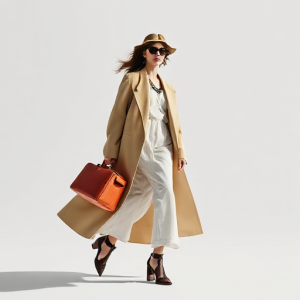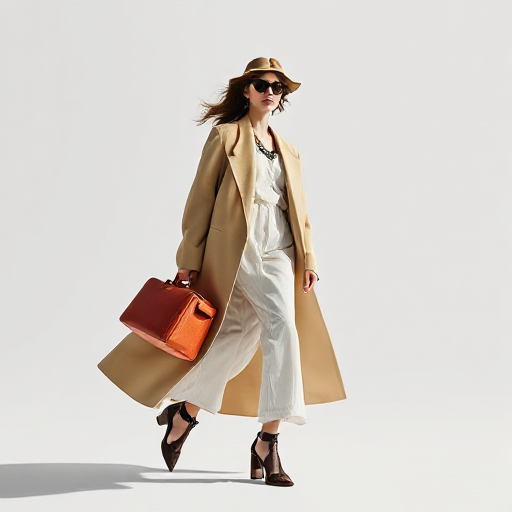
Fashion advertising campaigns play a significant role in shaping the image of brands, influencing consumer behavior, and driving sales. In the highly competitive and ever-evolving fashion industry, brands use these campaigns not just to showcase their products, but to tell compelling stories that resonate with their target audiences. From print ads to digital content, fashion advertising campaigns employ various media to create memorable and impactful experiences for consumers. In this article, we will explore the key elements of fashion advertising campaigns, their importance, the types of campaigns, and how they contribute to the overall success of a fashion brand.
1. The Importance of Fashion Advertising Campaigns
Fashion advertising campaigns are crucial for several reasons:
- Brand Identity: Campaigns help fashion brands define their personality, style, and message. Whether it’s luxury, streetwear, or sustainable fashion, the campaign communicates the essence of the brand.
- Target Audience Connection: Through well-thought-out campaigns, brands can connect with their ideal consumers. By understanding the target demographic’s desires, values, and behaviors, brands can craft messages that resonate emotionally, fostering loyalty and trust.
- Increasing Brand Awareness: Fashion brands rely on advertising campaigns to introduce their products and collections to a broader audience. A strategic campaign can generate buzz and spark conversations around a brand, significantly boosting its visibility.
- Driving Sales: Ultimately, the goal of any fashion campaign is to drive sales. Campaigns encourage people to purchase new collections or explore a brand’s offerings. The right ad at the right time can motivate people to make purchasing decisions.
- Cultural Influence: Fashion advertising is a powerful tool that shapes cultural trends and influences societal perceptions of beauty, style, and status. Through ads, fashion brands can help define what is “in” and reflect or even challenge cultural movements.
2. Key Elements of Fashion Advertising Campaigns
Creating a successful fashion advertising campaign involves several crucial elements:
- Creative Concept: Every fashion campaign starts with a creative concept. This concept is the foundation of the campaign and helps define its tone, message, and visuals. Whether it’s focused on a particular theme, season, or collection, the concept must align with the brand’s overall vision.
- Storytelling: One of the most powerful tools in fashion advertising is storytelling. A compelling narrative can elevate the brand, making it more relatable and memorable. Many fashion campaigns go beyond just showcasing clothes and accessories—they tell stories of aspiration, identity, and transformation.
- Visual Aesthetic: Fashion is inherently visual, and the way a campaign is visually presented is key to its success. High-quality photography, creative styling, and bold color choices play a major role in drawing the viewer’s attention and creating an emotional connection.
- Influencers and Models: Celebrities, influencers, and models are often the faces of fashion campaigns. The choice of model or influencer can significantly affect how the brand is perceived. Whether it’s an established supermodel or a rising influencer with a large following, these figures bring credibility and relevance to a campaign.
- Media Channels: Fashion advertising campaigns are typically disseminated across multiple channels, including digital platforms (social media, websites, and video ads), print media (magazines, billboards), and sometimes TV commercials. The right media channels are chosen based on the target audience and the campaign’s objectives.
- Call to Action (CTA): A strong call to action is essential for driving engagement and conversions. Whether it’s prompting consumers to visit the brand’s website, make a purchase, or share the campaign on social media, a well-placed CTA ensures that the campaign achieves its goals.
3. Types of Fashion Advertising Campaigns
Fashion brands use various types of advertising campaigns, depending on their goals, target market, and the message they want to convey. Here are some of the most common types:
- Seasonal Campaigns: Many fashion brands create campaigns to promote seasonal collections, such as spring/summer or fall/winter lines. These campaigns often highlight new trends, colors, and designs that are suited to the time of year.
- Product Launch Campaigns: When a brand introduces a new product or collection, a dedicated advertising campaign is often created. This type of campaign focuses on creating excitement and anticipation around the release, showcasing the product’s unique features and benefits.
- Brand Awareness Campaigns: These campaigns are designed to build or reinforce the brand’s identity and reach a broader audience. They often focus on promoting the brand’s core values, its mission, or the lifestyle it represents.
- Influencer and Celebrity Endorsement Campaigns: Partnering with influencers or celebrities is a popular way for fashion brands to gain visibility and reach new audiences. These campaigns leverage the influencer’s existing fan base and credibility to promote the brand’s products.
- Sustainability Campaigns: With increasing consumer interest in sustainable fashion, many brands now create campaigns that highlight their efforts to reduce their environmental impact. These campaigns may focus on eco-friendly materials, ethical manufacturing processes, or social responsibility.
- Limited Edition and Collaboration Campaigns: Many fashion brands collaborate with artists, other brands, or celebrities to create limited edition collections. These campaigns build hype around the exclusivity of the collaboration and encourage customers to act quickly to purchase the products.
4. The Role of Digital Media in Fashion Advertising Campaigns
In today’s digital age, digital media plays an increasingly important role in fashion advertising campaigns. Social media platforms like Instagram, TikTok, and YouTube allow brands to interact directly with their audience, share content, and drive engagement.
- Social Media Campaigns: Platforms like Instagram and TikTok are central to fashion advertising today. Through targeted posts, Stories, and influencer collaborations, brands can promote their products in a way that feels organic and authentic.
- Video Content: Short-form videos, such as those found on TikTok and Instagram Reels, have become a popular way to showcase fashion products. These videos provide an opportunity to show items in motion, feature styling tips, or tell a short narrative that connects with the audience.
- User-Generated Content: Many brands encourage their customers to share photos and videos of themselves wearing the brand’s products. This not only provides social proof but also fosters a sense of community and inclusivity around the brand.
- Paid Digital Ads: Fashion brands often use targeted digital ads to reach specific demographics. These ads are placed on social media, search engines, and other websites to attract users who are likely to be interested in the brand’s offerings.
5. The Future of Fashion Advertising Campaigns
The fashion industry is continuously evolving, and so are fashion advertising campaigns. Several trends and innovations are shaping the future of these campaigns:
- Augmented Reality (AR) and Virtual Reality (VR): AR and VR technologies allow consumers to experience products in new ways. Brands may use AR to let customers try on clothes virtually or preview products in 3D. This immersive technology is expected to play a major role in future advertising campaigns.
- Sustainability as a Key Message: As environmental concerns continue to rise, more fashion brands are focusing on sustainability in their campaigns. Future campaigns are likely to feature eco-friendly products and highlight sustainable practices.
- Inclusivity and Diversity: Fashion brands are increasingly embracing inclusivity and diversity in their advertising campaigns. Models of all shapes, sizes, colors, and backgrounds are being featured, reflecting a broader range of consumers and making fashion more accessible.
- AI and Data-Driven Campaigns: Artificial intelligence (AI) and data analytics are allowing brands to create highly personalized and targeted advertising campaigns. By analyzing consumer data, brands can deliver ads that are tailored to an individual’s preferences and behaviors.
Fashion advertising campaigns are essential for building a brand’s identity, reaching new customers, and driving sales. By combining creativity, storytelling, and strategic media planning, these campaigns allow brands to engage with their audiences in meaningful ways. As the fashion industry continues to evolve, advertising campaigns will remain an indispensable tool for influencing trends, shaping culture, and driving business growth. With the rise of digital media and new technologies, the future of fashion advertising looks brighter than ever, offering endless opportunities for innovation and creativity.
